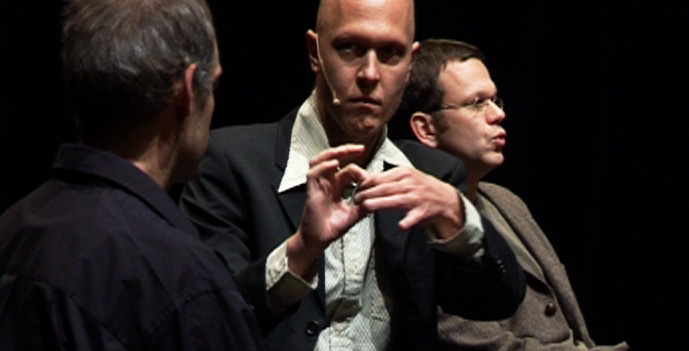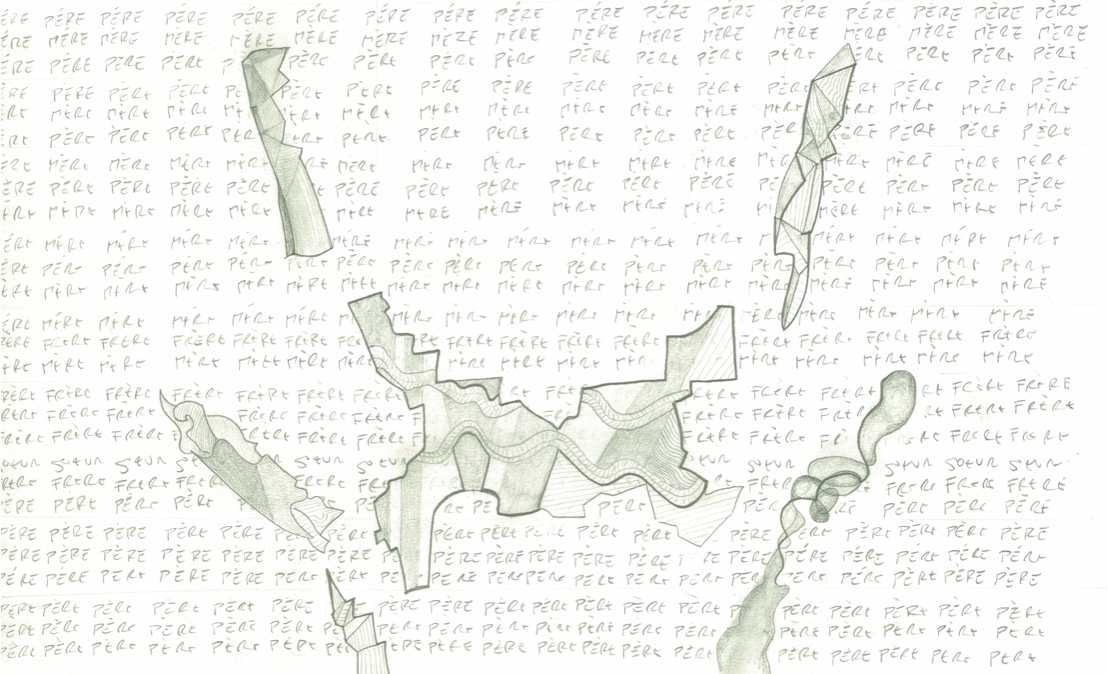Alessandro Bosetti |
Trinitaire (2015)
for 3 voices, 9:30 min.
writing through genesis (2015)
radio production, for 6 voices,
44 min
The Pool and the Soup (2007)
for 4 - 9 performer,
10-18 min. (variabel)
Ouagá (2004/2006)
for 4 voices and tape,
6 min.
for 3 voices, 9:30 min.
writing through genesis (2015)
radio production, for 6 voices,
44 min
The Pool and the Soup (2007)
for 4 - 9 performer,
10-18 min. (variabel)
Ouagá (2004/2006)
for 4 voices and tape,
6 min.
| born Milano, Italy, 1973, is a composer, performer and sound artist currently based in Berlin. Most of his works delve on musicality of spoken language and sonorous aspects of verbal communication. He utilizes misunderstandings, translations and interviews as compositional tools. He has been presenting pieces for voice and electronics blurring the line between electro acoustic composition, aural writing and performance in leading venues as the GRM/Presences Electroniques festival in Paris, Roulette in NYC, and Cafe OTO in London among many more all over Europe, Asia and the United States. One of the most innovative radio artists of his generation he created a vast body of work of hybrid, award winning, text-sound and radio compositions for the main Radio and Electro Acoustic Music studios in Europe, most notably for the historical WDR’s Studio Akustische Kunst in Cologne and Deutschland Radio Kultur in Berlin. As a concert composer he has been writing for ensembles as the Kammerenseble Neue Musik and the Maulwerker in Berlin and the Neue Vokalsolisten Stuttgart. |

The Pool and the Soup (2006)
A set of rules for spoken improvisation.
Originally written for Maulwerker see video
Trinitaire (2015) see video
Trinitaire is a very visual piece of music that traces a family constellation in its simplest features. The piece is based on repetitions, permutations and the constant dance of generations. Trinitaire is divided into two parts: the first is a homorhythmic chorus, pulsating and fast, in which simple permutations of a few words (mère - mother; père - father; sœur - sister; frère - brother) give rise to a rapid succession of flickering phonetic chords. The four figures fight for the three places available alone in a daring dance of combinations. The first part of Trinitaire is notated as a hand-drawn graphic score from which all three performers read simultaneously. At first glance, the score looks like endless repetitions of pencil graphemes, which are finally infiltrated by mysterious and parasitic forms. The second part jumps abruptly to a completely different dynamic: the three parts sing soft glissandi reminiscent of sine tones. These lines, almost palpably visible in space, are not written down in concrete terms, but are subject to a regulating system in which the dynamics of the encounters determine the drawing of the lines. Trinitaire is a simple, asymmetrical piece in which elements typical of Bosetti's music appear: repetition, language and biography.

A set of rules for spoken improvisation.
Originally written for Maulwerker see video
Trinitaire (2015) see video
Trinitaire is a very visual piece of music that traces a family constellation in its simplest features. The piece is based on repetitions, permutations and the constant dance of generations. Trinitaire is divided into two parts: the first is a homorhythmic chorus, pulsating and fast, in which simple permutations of a few words (mère - mother; père - father; sœur - sister; frère - brother) give rise to a rapid succession of flickering phonetic chords. The four figures fight for the three places available alone in a daring dance of combinations. The first part of Trinitaire is notated as a hand-drawn graphic score from which all three performers read simultaneously. At first glance, the score looks like endless repetitions of pencil graphemes, which are finally infiltrated by mysterious and parasitic forms. The second part jumps abruptly to a completely different dynamic: the three parts sing soft glissandi reminiscent of sine tones. These lines, almost palpably visible in space, are not written down in concrete terms, but are subject to a regulating system in which the dynamics of the encounters determine the drawing of the lines. Trinitaire is a simple, asymmetrical piece in which elements typical of Bosetti's music appear: repetition, language and biography.

